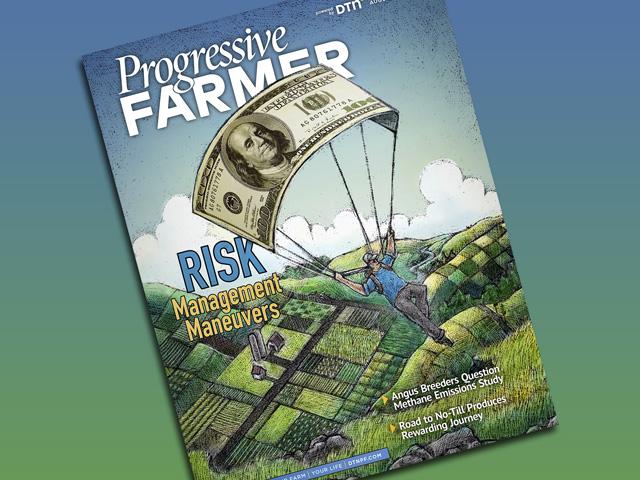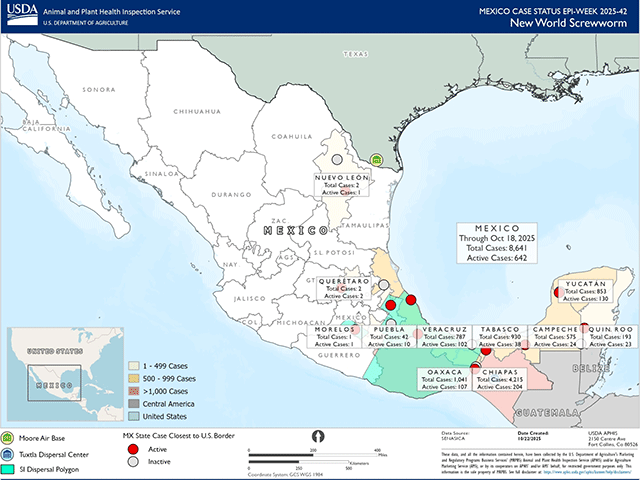Border Talks Shift Cattle Markets
Cattle Market Tumbles as Mexico Seeks to Reopen Border to Live Cattle Trade
OMAHA (DTN) -- Cattle market prices again took a turn down on Friday following reports that Mexico's agricultural minister will visit with U.S. Agriculture Secretary Brooke Rollins about reopening the border for live cattle imports.
This past week, the cattle and beef industry has been front and center in national news with debate about beef prices, Argentine beef imports, President Donald Trump's social media comments about cattle markets, and the administration's plan to rebuild the cattle herd while lowering prices for consumers.
Now comes more discussion between the Trump administration and Mexican officials about reopening live cattle imports.
DTN Livestock Analyst ShayLe Stewart said Friday was another challenging day for the cattle complex, as live cattle contracts closed mostly $7.25 lower, but feeder cattle contracts sank $9.25 lower, closing at their daily limit.
"Aside from the pressure endured earlier in the week about the potential increase of beef imports from Argentina, the market was panicked on Friday to learn that Sec. Rollins would be meeting with Mexico's ag minister," Stewart added.
"It was bad enough to see the prices close as sharply lower as they did, but to make matters even worse, both the spot December live cattle contract and the spot November feeder cattle contracts closed below their 40-day moving averages, which could ensure even more pressure next week."
Reuters reported that Mexican President Claudia Sheinbaum said Agriculture Minister Julio Bergegue would meet with Rollins next week about allowing imports of Mexican feeder cattle, which have been kept out of the U.S. market since July.
P[L1] D[0x0] M[300x250] OOP[F] ADUNIT[] T[]
CATTLE IMPORTS DOWN
The U.S. imported 1.2 million head from Mexico annually in both 2023 and 2024, but that number has fallen to 230,000 head in 2025. Live cattle imports were shut down in May but reopened briefly in July until New World screwworm was detected on July 9 in Veracruz, Mexico, about 370 miles from the U.S.
Since then, NWS has continued to move through the country, with the latest case in mid-September in the state of Nuevo Leon, Mexico, less than 70 miles from the Texas border. Mexico has said these cases in the uppermost region of Mexico have been contained and resolved, as they were cattle that had been transported from a region farther south.
Following the Sep. 21 announcement, Rollins said in a USDA news release, "Protecting the United States from NWS is non-negotiable and a top priority of the Trump Administration. This is a national security priority."
STERILE FLY RELEASE CONTINUES
USDA continues to release 100 million sterile flies per week in Mexico, which are sourced from the facility in Panama. Both the U.S. and Mexico are planning production facilities.
Mexico plans to renovate a facility in Metapa, which has been a fruit fly facility. This facility is expected to produce 60 million to 100 million sterile flies as soon as the summer of 2026.
The sterile fly dispersal facility at Moore Air Base in Edinburg, Texas, is projected to begin operating in early 2026. The sterile fly production facility at the same location is expected to be complete toward the end of 2026, with a targeted maximum capacity of 300 million sterile flies per week, according to USDA.
Currently, NWS has not been detected in the U.S. NWS fly larvae infest living tissue of warm-blooded animals by burrowing into wounds. If left untreated, it can cause the animal to die.
NWS was eradicated from the U.S. in 1966 using the sterile insect technique, a method used again in the Florida Keys in 2016.
TEXAS AG COMMISSIONER CALLS FOR ALLOWING IMPORTS
Texas Agriculture Commissioner Sid Miller also, earlier this week, proposed allowing "targeted imports" of Mexican cattle to stabilize supplies. Miller had issued a series of recommendations after USDA released its plan for cattle markets on Wednesday.
Miller's proposal stated, "The quickest way to reduce beef prices and do it within 24 hours is to import feeder cattle instead of boxed beef. Normally, about 15% of our feeder cattle come from Mexico, but shipments have been backed up for almost a year, creating shortages. As we enter the Mexican feeder cattle season (November to February), we can safely reopen ports of entry in a controlled, incremental way without risking the spread of pests like the screwworm fly. A measured, well-thought-out approach to live cattle imports will stabilize supplies while protecting U.S. biosecurity."
For more on the cattle markets, see "Call the Market: After Last Week's Chaos, Cattle Complex Asks: Now What?" by DTN Livestock Analyst ShayLe Stewart here: https://www.dtnpf.com/….
Jennifer Carrico can be reached at jennifer.carrico@dtn.com
Follow her on social platform X @JennCattleGal
Chris Clayton can be reached at Chris.Clayton@dtn.com
Follow him on social platform X @ChrisClaytonDTN
(c) Copyright 2025 DTN, LLC. All rights reserved.




